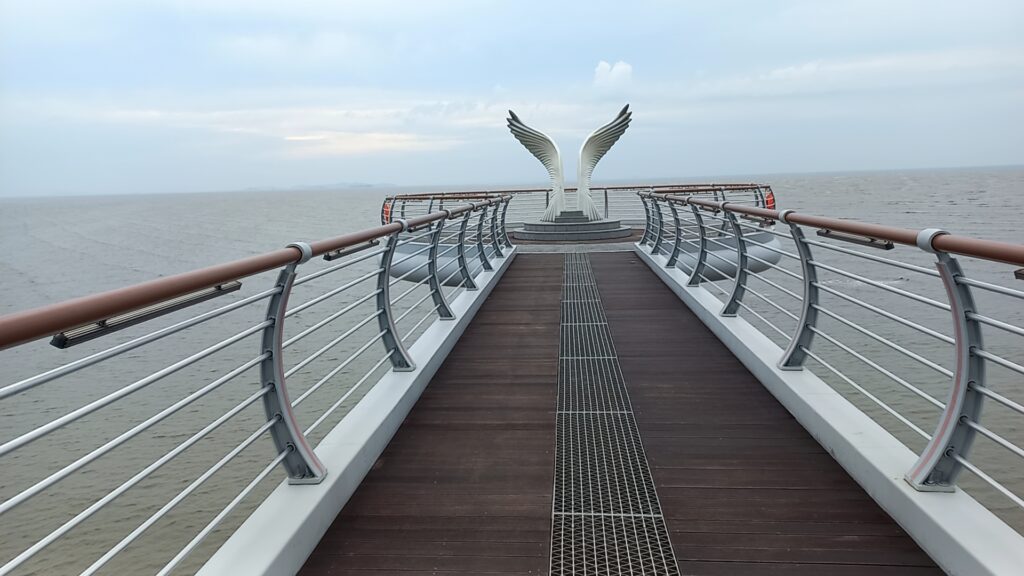The Story Behind the Name
The history of Suseungdae is as fascinating as its landscape. During Korea’s Three Kingdoms period, this area was a volatile border between the kingdoms of Silla and Baekje. It was a place where Baekje envoys would say their goodbyes before embarking on a dangerous journey into Silla territory. Because they were unsure if they would ever return, the spot was originally named Susongdae (愁送臺), which means “a place of anxious farewells.”
However, during the Joseon Dynasty, a prominent scholar named Gwon Sin (also known as Yosu Shin Gwon) built the Guyeonseodang (龜淵書堂) academy here. A famous story tells of the great scholar Yi Hwang (Yi Toegye), who was passing through the area. Upon hearing the name “Susongdae,” he felt it was too somber for such a beautiful place. He suggested changing the name to Suseungdae (搜勝臺), meaning “a place of supreme scenery,” and sent a poem to encourage the change. The new name stuck, and Suseungdae has been a symbol of natural beauty ever since.



Exploring the Scenery and Cultural Heritage
Suseungdae is an awe-inspiring blend of a clear stream, ancient rock formations, and a lush pine forest. The site is centered around a large rock that resembles a turtle, known as Amgudae (岩龜臺). When the water level is low, you can even walk up to it for a unique perspective.
The area is also home to a number of historical buildings that add to its tranquil atmosphere. The Guyeonseowon (龜淵書院) is a traditional Confucian academy and shrine dedicated to the scholars who studied here. The Gwansuru Pavilion (觀水樓) is a beautiful two-story structure overlooking the river, providing a perfect spot to relax and take in the view. You can also find Yosujeong Pavilion (樂水亭) and a number of historical monuments and steles scattered throughout the site, all carefully preserved by local families and scholars.
Getting to Suseungdae
While Geochang may be a lesser-known destination for international tourists, it’s well worth the journey.
- By Bus: The most common way to get to Geochang is by intercity bus. There are regular bus routes from major cities like Seoul, Daejeon, and Busan to the Geochang Intercity Bus Terminal.
- From the Terminal: Once you arrive at the Geochang Bus Terminal, you can take a local bus or a taxi to Suseungdae. The drive is relatively short, and a taxi is the quickest and most convenient option.
Nearby Attractions & Local Flavors
Your trip to Suseungdae wouldn’t be complete without exploring the other hidden gems in Geochang. Here are some recommendations to round out your itinerary.
1. Hwangsan Traditional Hanok Village (황산전통한옥마을)
Just a short walk from Suseungdae, this charming village is a perfect example of traditional Korean architecture. It’s a peaceful place to stroll along narrow alleyways with stone walls and admire the beautifully preserved hanok houses. You can even find some traditional cafes and guesthouses here to experience the local culture.
2. Geochang Changpowon (거창창포원)
A vast botanical garden located along the river, Changpowon is famous for its stunning variety of flora, particularly the irises that bloom in the spring. It’s an expansive and meticulously maintained park that offers a great space for a leisurely walk or a picnic.
3. Local Cuisine
After a day of exploring, be sure to try some of Geochang’s local specialties. The region is well-known for its fresh mountain vegetables and duck dishes. Many local restaurants serve these traditional meals, offering a true taste of the South Gyeongsang countryside. For a unique experience, look for restaurants that specialize in Anui-style ribs (안의원조갈비찜), a local delicacy.



Discover more from Creative Innovator in Korea
Subscribe to get the latest posts sent to your email.





